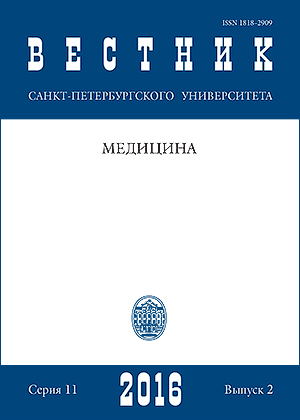ДЕСТРУКТИВНОЕ ДЕЙСТВИЕ ИМПУЛЬСНОГО КОРОННОГО РАЗРЯДА В ВОЗДУХЕ НА БИОПЛЕНКИ УСЛОВНО-ПАТОГЕННЫХ БАКТЕРИЙ
DOI:
https://doi.org/10.21638/11701/spbu11.2016.207Аннотация
Pulsed corona discharge (PCD) of moderate frequency in air has a bactericidal and bacteriostatic effect on Escherichia сoli М17 cultures at both cellular and population levels. PCD exposure inhibits forming a microbial community and results in the destruction of formed biofi lms. Th e paper presents data of electron microscopy investigations of cells’ and biofi lms’ ultrastructure aft er PCD treatment over a 90 second period. The morphological properties of opportunistic bacteria E. сoli M17 cells altered after sub-lethal and lethal thermal exposure. Refs 32. Figs 6.
Ключевые слова:
импульсный коронный разряд, низкотемпературная воздушная плазма, условно-патогенные бактерии, Escherichia coli, бактериальная биопленка, механизмы деструкции клеток
Скачивания
Библиографические ссылки
Загрузки
Опубликован
Как цитировать
Выпуск
Раздел
Лицензия
Статьи журнала «Вестник Санкт-Петербургского университета. Медицина» находятся в открытом доступе и распространяются в соответствии с условиями Лицензионного Договора с Санкт-Петербургским государственным университетом, который бесплатно предоставляет авторам неограниченное распространение и самостоятельное архивирование.




